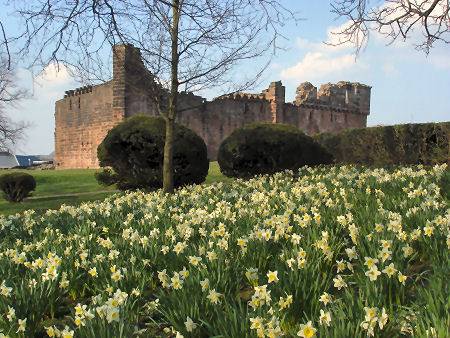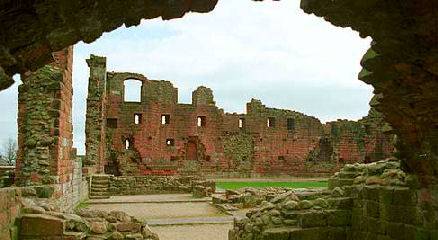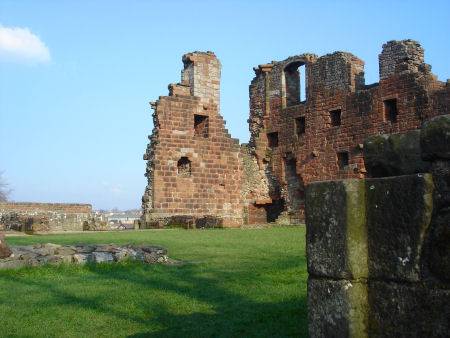Penrith Castle
OS Grid ref:- NY 516302
The imposing red sandstone ruins of Penrith Castle, or the 'Castle of the Kings' as it was once known, dates from the medieval era. The building is now in the care of English Heritage.
A stone tower house with a courtyard encased by a wide ditch originally occupied the site. Work on the castle was begun in 1397 by William Strickland, later Bishop of Carlisle, in response to the Scots burning Penrith, Strickland was granted a licence to crenallate his chamber and mantlet.

The castle later passed into the possession of the Neville family, who rose to prominence in the north in the late Middle Ages. The Red Tower was added in the early fifteenth century by the influential Ralph Neville, first Earl of Westmorland. One of the castle's keepers was to be his more famous son, Richard Neville, Earl of Warwick, who became known to history as 'Warwick the Kingmaker'. After the death of Warwick at the Battle of Barnet in 1471, Edward IV granted the castle to his brother Richard, Duke of Gloucester, later King Richard III. During the time that he acted as his brother Edward IV's Lieutenant of the North , Richard of Gloucester added a new gatehouse and extensive lodgings around the courtyard.

Penrith Castle suffered damage during the Civil War when it was used by the Parliamentarian General Lambert. It remained in the possession of the crown until given by King William III to his friend Hans Willem Bentinck, 1st Earl of Portland. The castle eventually passed from the Bentincks to the Dukes of Devonshire, by whom it was sold to the Lancaster & Carlisle Railway Company. It was finally acquired by Penrith Urban District Council who converted the grounds into the present surrounding public park in the 1920's.

Only the weathered curtain walls and towers of the structure now stand to any height, although its moat still remains. The castle has been in ruins for the past four hundred years. It dominates Castle Park, which is Penrith's main leisure area and stands oppposite the railway station.
External Links
Tutbury Castle- article on Tutbury Castle and Mary, Queen of Scots imprisonment there.
